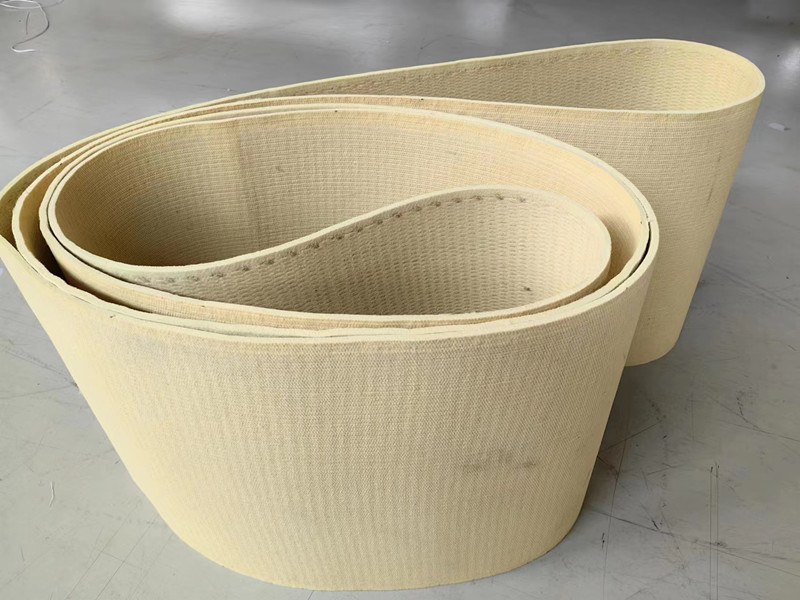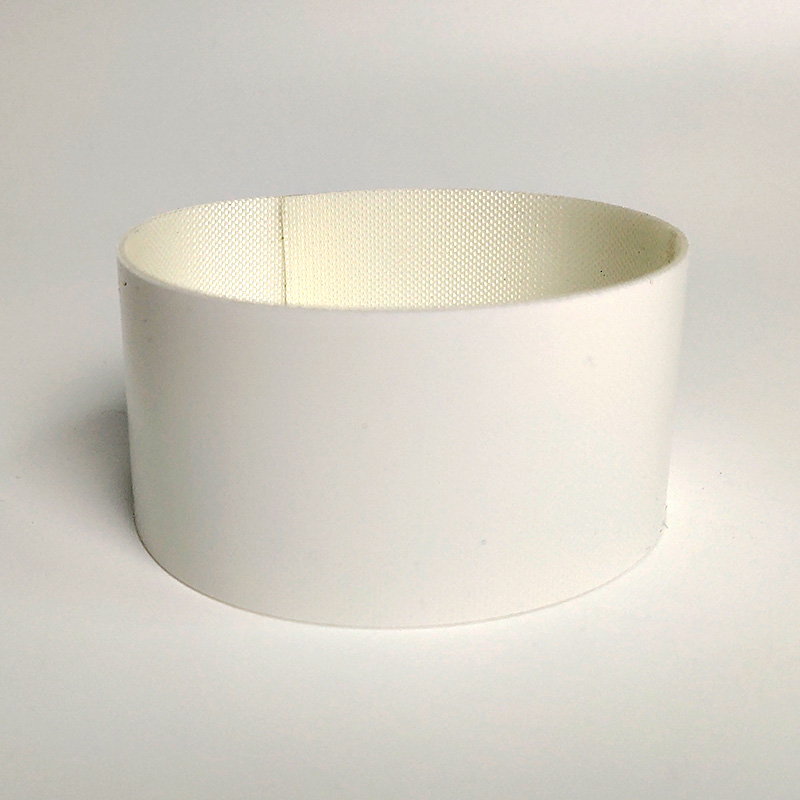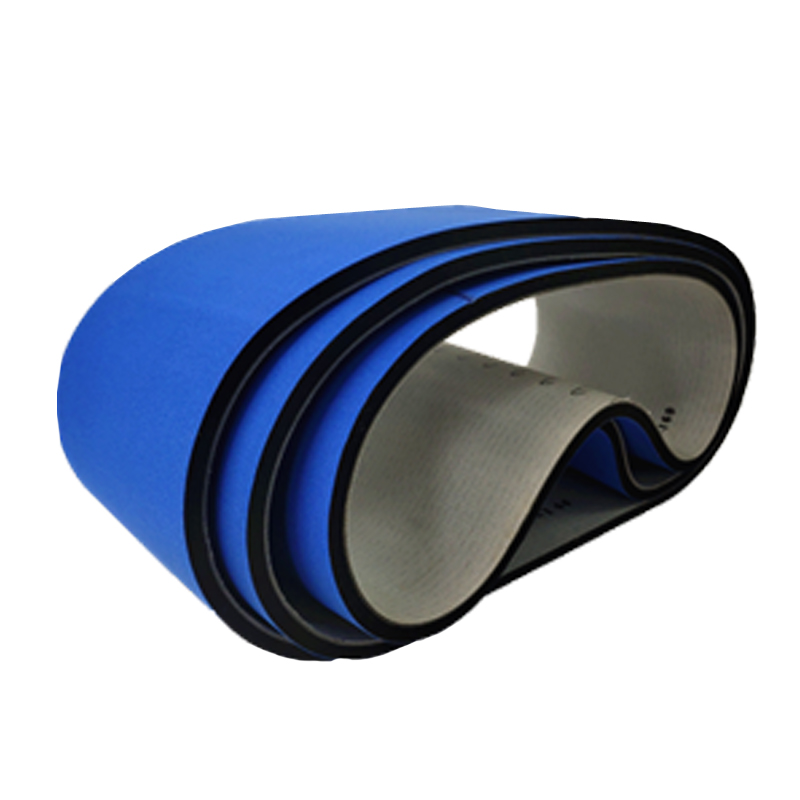What should be paid attention to when selecting rubber conveyor belt
Updated: 2022-7-13
The shape and structure of rubber conveyor belt: different types of conveying modes, such as flat, trough, large inclination, bending and turning conveying, box, tube, closed conveying, and lifting conveying, etc. These different conveying modes are determined by the conveying capacity of the conveyor belt, and will be limited by the terrain and environmental conditions, which determine the material, structure, and safety factor of the heavy rubber belt tensile body The premise of the required belt length;
Selection of material and structure of conveyor belt core: the performance of conveyor belt has a great relationship with the material, structure and number of layers of the belt core. The cotton canvas multi-layer transport belt has low strength, many layers, fatigue resistance, mildew and corrosion resistance, large weight, high energy consumption, high strength, large elasticity, light weight, good impact and bending resistance, good grooving performance, mold resistance Water resistance and other properties are better than ordinary conveyor belt with cotton canvas as the skeleton. Its disadvantage is that the elongation is large. When the tensioning stroke can be set for a long time, nylon rubber belt can be preferred. The strength of polyester belt core is similar to that of cotton fiber. It has all the advantages of nylon belt. Its elastic modulus is higher than that of nylon, its elongation is small, and its dimensional stability is good. It is an ideal common industrial conveyor belt, while the strength of steel rope core conveyor belt is high, Good slotting performance, small elongation, short tightening stroke, especially suitable for large transportation volume, high belt speed and long distance transportation requirements;
Selection of covering layer: The selection of covering layer includes covering material, surface morphology and thickness. The main components of covering layer are various rubber and plastic. In most climates, the rubber belt can work normally under the condition that the inclination angle is not greater than the flat angle, while the inclination angle of normal operation of flame-retardant conveyor belt is below 120 degrees. Although its main skeleton material is not as good as the resilience of rubber, it has good flame resistance Discharging property and cleaning property are also very different due to the different properties of various rubbers, such as natural rubber and styrene-butadiene rubber have good energy absorption and wear resistance, ethylene-propylene rubber is particularly heat resistant, nitrile rubber has good oil resistance, and propylene-butyl rubber is not only heat resistant but also resistant to oxidation chemical action. Therefore, the type and type of covering material selected must be comprehensively considered according to the type, operating conditions and working environment of commonly used conveying materials;
In addition, the increase in the thickness of the covering layer is also conducive to improving the impact resistance and wear resistance of the rubber conveyor belt. Especially, nowadays, the cotton canvas belt core has been replaced by the synthetic fabric belt core, and the performance of the belt core has been greatly improved, while the thickness is relatively thin. In order to improve the overall performance of the belt, it is necessary to increase the thickness of the covering layer accordingly to give full play to its advantages and improve the service life of the conveyor belt, However, if the lower covering layer is too thick, the running resistance of heavy heat-resistant conveyor belt will increase, which should be noted; The running resistance of heat-resistant conveyor belt becomes larger, which needs attention.
Selection of material and structure of conveyor belt core: the performance of conveyor belt has a great relationship with the material, structure and number of layers of the belt core. The cotton canvas multi-layer transport belt has low strength, many layers, fatigue resistance, mildew and corrosion resistance, large weight, high energy consumption, high strength, large elasticity, light weight, good impact and bending resistance, good grooving performance, mold resistance Water resistance and other properties are better than ordinary conveyor belt with cotton canvas as the skeleton. Its disadvantage is that the elongation is large. When the tensioning stroke can be set for a long time, nylon rubber belt can be preferred. The strength of polyester belt core is similar to that of cotton fiber. It has all the advantages of nylon belt. Its elastic modulus is higher than that of nylon, its elongation is small, and its dimensional stability is good. It is an ideal common industrial conveyor belt, while the strength of steel rope core conveyor belt is high, Good slotting performance, small elongation, short tightening stroke, especially suitable for large transportation volume, high belt speed and long distance transportation requirements;
Selection of covering layer: The selection of covering layer includes covering material, surface morphology and thickness. The main components of covering layer are various rubber and plastic. In most climates, the rubber belt can work normally under the condition that the inclination angle is not greater than the flat angle, while the inclination angle of normal operation of flame-retardant conveyor belt is below 120 degrees. Although its main skeleton material is not as good as the resilience of rubber, it has good flame resistance Discharging property and cleaning property are also very different due to the different properties of various rubbers, such as natural rubber and styrene-butadiene rubber have good energy absorption and wear resistance, ethylene-propylene rubber is particularly heat resistant, nitrile rubber has good oil resistance, and propylene-butyl rubber is not only heat resistant but also resistant to oxidation chemical action. Therefore, the type and type of covering material selected must be comprehensively considered according to the type, operating conditions and working environment of commonly used conveying materials;
In addition, the increase in the thickness of the covering layer is also conducive to improving the impact resistance and wear resistance of the rubber conveyor belt. Especially, nowadays, the cotton canvas belt core has been replaced by the synthetic fabric belt core, and the performance of the belt core has been greatly improved, while the thickness is relatively thin. In order to improve the overall performance of the belt, it is necessary to increase the thickness of the covering layer accordingly to give full play to its advantages and improve the service life of the conveyor belt, However, if the lower covering layer is too thick, the running resistance of heavy heat-resistant conveyor belt will increase, which should be noted; The running resistance of heat-resistant conveyor belt becomes larger, which needs attention.




